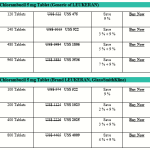Anti-carbonation coating Process in Construction
Construction is one of the most capital-intensive industries, with projects often necessitating large sums of money. To keep costs low and manage project budgets, contractors face a constant challenge in finding ways to cut costs. In order to reduce cost, contractors always try to minimize the cost of construction. One method for doing so is by using anti-carbonation coatings on concrete structures instead of regular carbonation coatings. This article will explore the advantages of using anti-carbonation coatings instead of regular carbonation coatings in construction, along with a detailed explanation on how it works and the different types that are available Best Anti-carbonation coating Service in India today.
What is a Carbonation Coating?
A carbonation coating is a liquid applied to the concrete surface to increase the hardness of the concrete. Harder concrete is less susceptible to the action of the carbon dioxide in the air, increasing the effectiveness of the coating. By increasing the hardness of the concrete surface, carbonation coatings decrease the amount of concrete expansion and contraction with temperature. This reduces the potential for cracks in the concrete. These coatings are applied using airless spray equipment. Each application of a liquid coating is followed by a period of several minutes when the coating is dry enough to allow the concrete surface to contract slightly under its own weight. This process increases the hardness of the concrete by about 50%. While this may not sound like much, it means that concrete under a coating can now withstand increased levels of stress without chipping, cracking, or becoming saturated with water.
How does Carbonation Coating work?
Carbonation coatings increase the solidity of the concrete by changing the state of matter of the concrete from a liquid to a solid. When concrete is exposed to carbon dioxide in the air, the carbon dioxide reacts with the water in the concrete to form carbonic acid. The carbonic acid reacts with the silica in the concrete to form a very hard substance called silica gel, which is mostly anhydride. The anhydride in the concrete reacts with water again to form water, leaving no residue behind. The coating is applied to the concrete in a liquid form, which is dried out to become a solid. The dried material becomes a very hard coating, which is different from the normal solidity of concrete. The coating hardens the concrete surface, which makes the concrete less likely to expand and contract or lose shape with temperature changes.
Types of Carbonation Coatings
– Carbonation membrane coatings – These coatings use a polymer-based membrane to create a carbonation coating. The polymer membrane is impregnated with various chemicals that react with carbon dioxide to form silica gel in the concrete. The process of creating this coating is slow, making it suitable for large-scale commercial work. – High-density coatings – These coatings incorporate grains of ceramic or sand as a replacement for the silica gel. They produce a coating with a higher solidity than carbonation membranes. However, these coatings also have a higher porosity, making them less effective at increasing the hardness of the concrete. – Epoxy coatings – These coatings incorporate epoxy into a liquid mixture. After the liquid mixture dries, the coating forms on the concrete surface. These coatings are suitable for indoor or outdoor work.
Advantages of using Anti-Carbonation Coatings in Construction
– Reduced Maintenance – Anti-carbonation coatings are easier to maintain than regular carbonation coatings. Regular coatings require periodic application of a liquid that must be allowed to dry before the coating is applied as a solid. Anti-carbonation coatings require minimal maintenance. They can simply be brushed off if they become dirty, or they can be scraped off if they are embedded into the concrete. – Greater Durability – Anti-carbonation coatings are more durable than regular carbonation coatings. Regular coatings can only withstand about 20 years of use before they need to be replaced. Anti-carbonation coatings can typically withstand 50 years of use before they need to be replaced. – Better Heat Resistance – Anti-carbonation coatings are more heat resistant than regular carbonation coatings. Regular coatings can withstand a maximum heat of about 85°C (185°F) before they begin to lose their effectiveness. Anti-carbonation coatings can typically withstand a maximum heat of about 105°C (221°F) before they begin to lose their effectiveness. However, regular coatings can typically withstand a maximum heat of about 95°C (203°F) before they begin to lose their effectiveness.
Disadvantages of using Anti-Carbonation Coatings in Construction
– Expensive – The most significant disadvantage of using anti-carbonation coatings is the cost. Anti-carbonation coatings cost about double the cost of carbonation coatings. It is also difficult to find contractors experienced with anti-carbonation coatings. – More Time-Consuming – Anti-carbonation coatings also require more time to apply than carbonation coatings. This requires contractors to be able to work efficiently, which is a difficult skill to develop. – Less Efficient – Both anti-carbonation coatings and regular carbonation coatings require pumping of carbon dioxide to create the silica gel substance. An anti-carbonation coating process is more efficient than a regular coating process, but it is still a less efficient process than the process used for carbonation coatings.
Conclusion
Anti-carbonation coatings are a more expensive, time-consuming, and less efficient way to increase the solidity of concrete. The greatest advantage of anti-carbonation coatings is their reduced maintenance requirement, but regular coatings can last longer and require less time to apply. Regular coatings are more durable and more efficient, making them a better choice for contractors to choose.
Get Directions to – anti-carbonation coating services In India
This article was originally published at – https://theomnibuzz.com/anti-carbonation-coating-process-in-construction/









